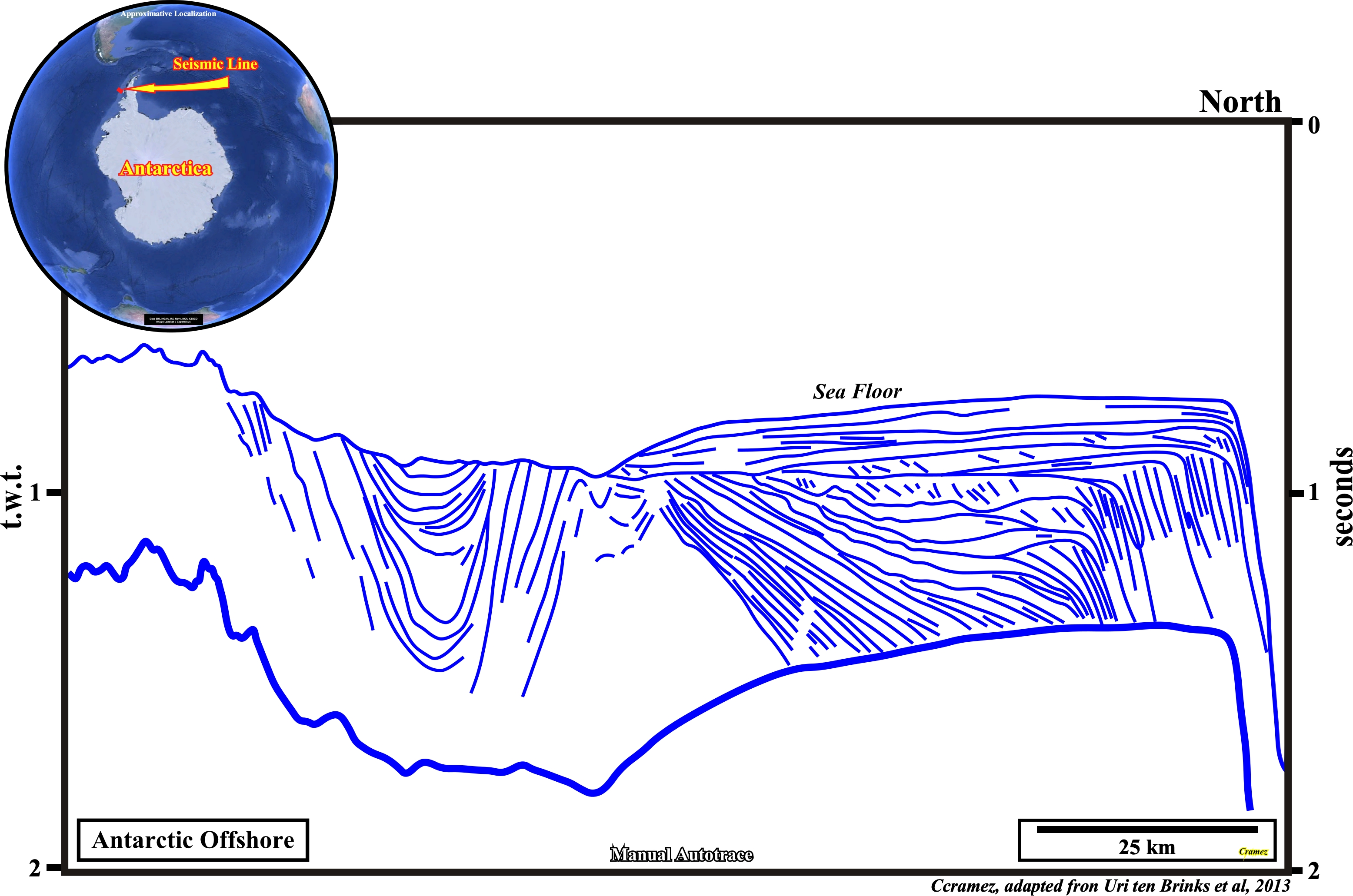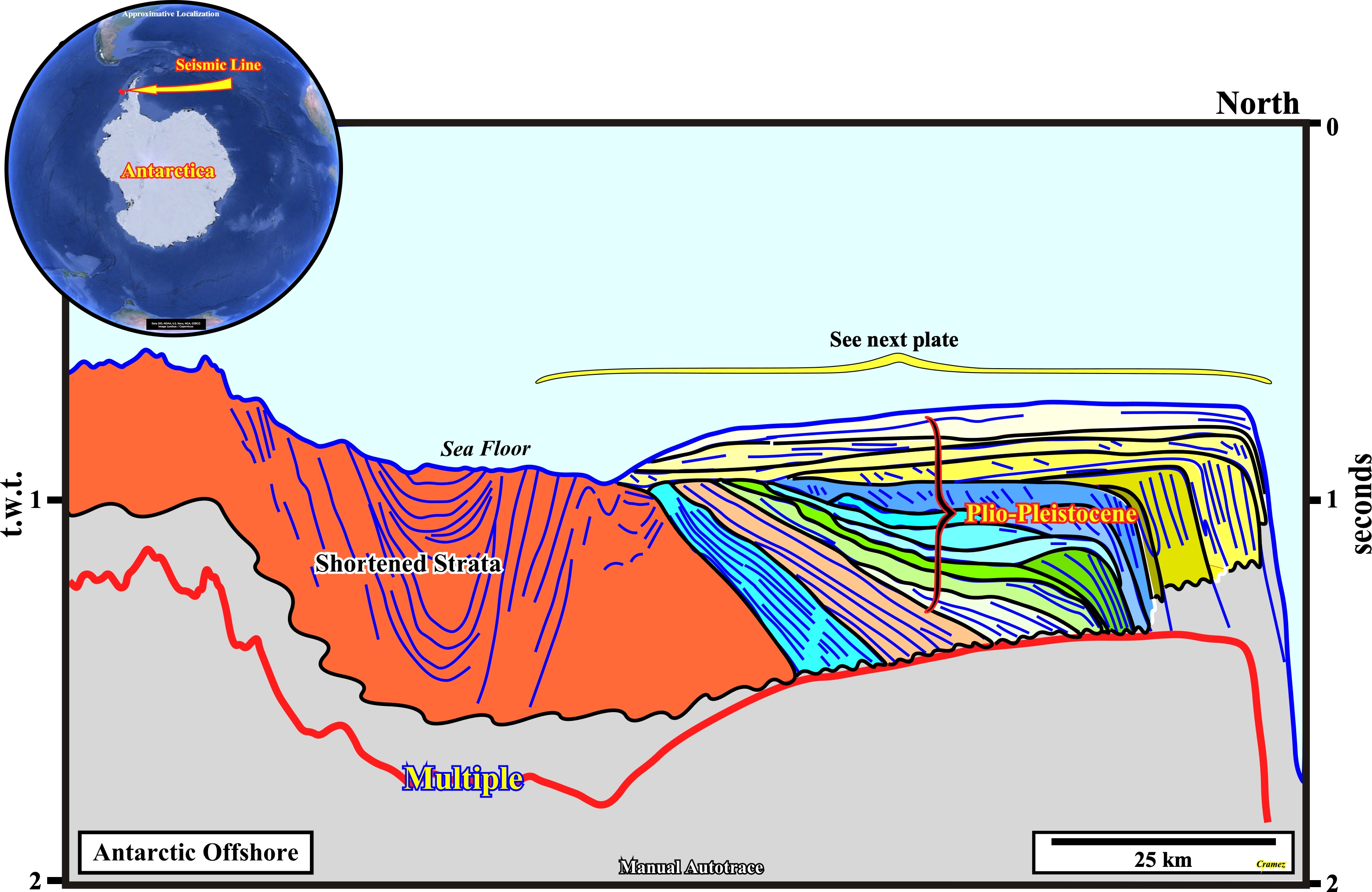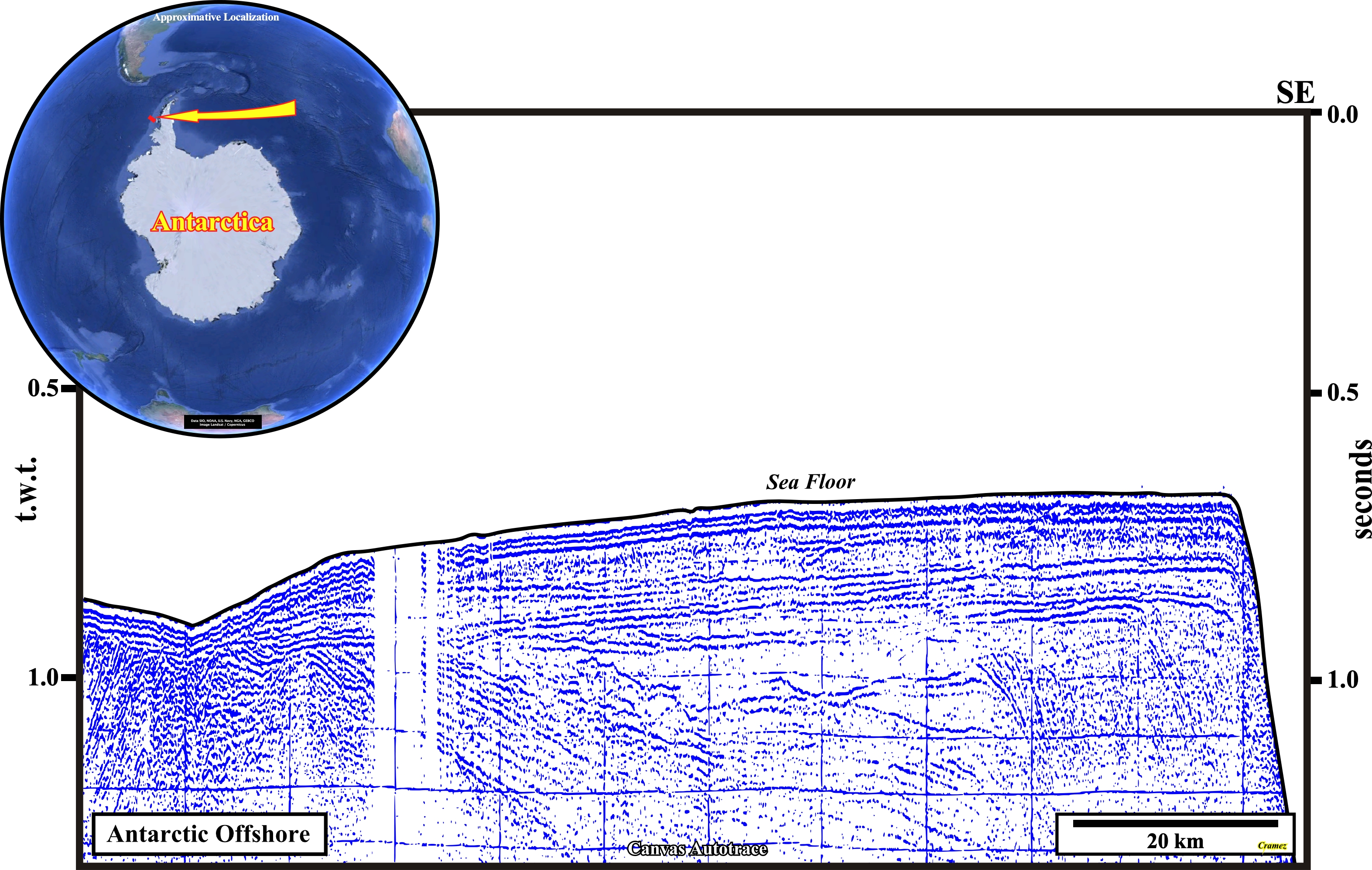

Antarctic Offshore
Antarctic Peninsula



These plates corroborated to conjectures advanced for the Page 9 and Page 8 . In addition, they show old shortened strata, clearly, deformed by a compressional tectonic regime, which are covered two seismic packages sediments predating the Plio-Pleistocene characterized by a parallel internal configuration over which the overall progradational Plio-Pleistocene strata were deposited. Taking into account that only glacial changes are, at the same time, important (over 10 m) and fast (lasting less than 1 My) and that during a glaciation, the weight of the ice cap (3-4 km thick) sinks the lithosphere, it logical to assume that when the ice melts, the Earth's surface slowly rises again to reach the equilibrium position. That is to say, the mechanism of crustal subsidence is very similar to that of a block of wood that is placed inside a viscous liquid: when the block is released, it will seek to find a position of equilibrium, which is, mainly, determined by its density sand the rate at which this equilibrium is reached is controlled by the viscosity of the liquid. What happens to the block of wood happens to the lithosphere. A thick layer of ice forces the lithosphere to plunge into the asthenosphere. Since the pressure caused by the ice disappears a position of equilibrium is, slowly, restored, since the asthenosphere is very viscous. It takes about 15,000 years for the Earth's surface to regain its original attitude and re-establish the conditions necessary for another glaciation. As the amount of water in all its forms is considered constant since the Earth's formation (± 4.5 Ga), during a glaciation, the absolute sea level (the supposed global sea level, referenced to a fixed point, which is, usually, the Earth center) falls and during a deglaciation (deicing epoch), the absolute sea level rises. This was, exactly, what happened during the Pliocene/Pleistocene in Antarctica offshore ,where during glacial periods the ice sheets expanded and during interglacial periods they contracted.
Send E-mails to carlos.cramez@bluewin.ch with comments and suggestions to improve this atlas.
Copyright © 2001 CCramez
Last update:
2022